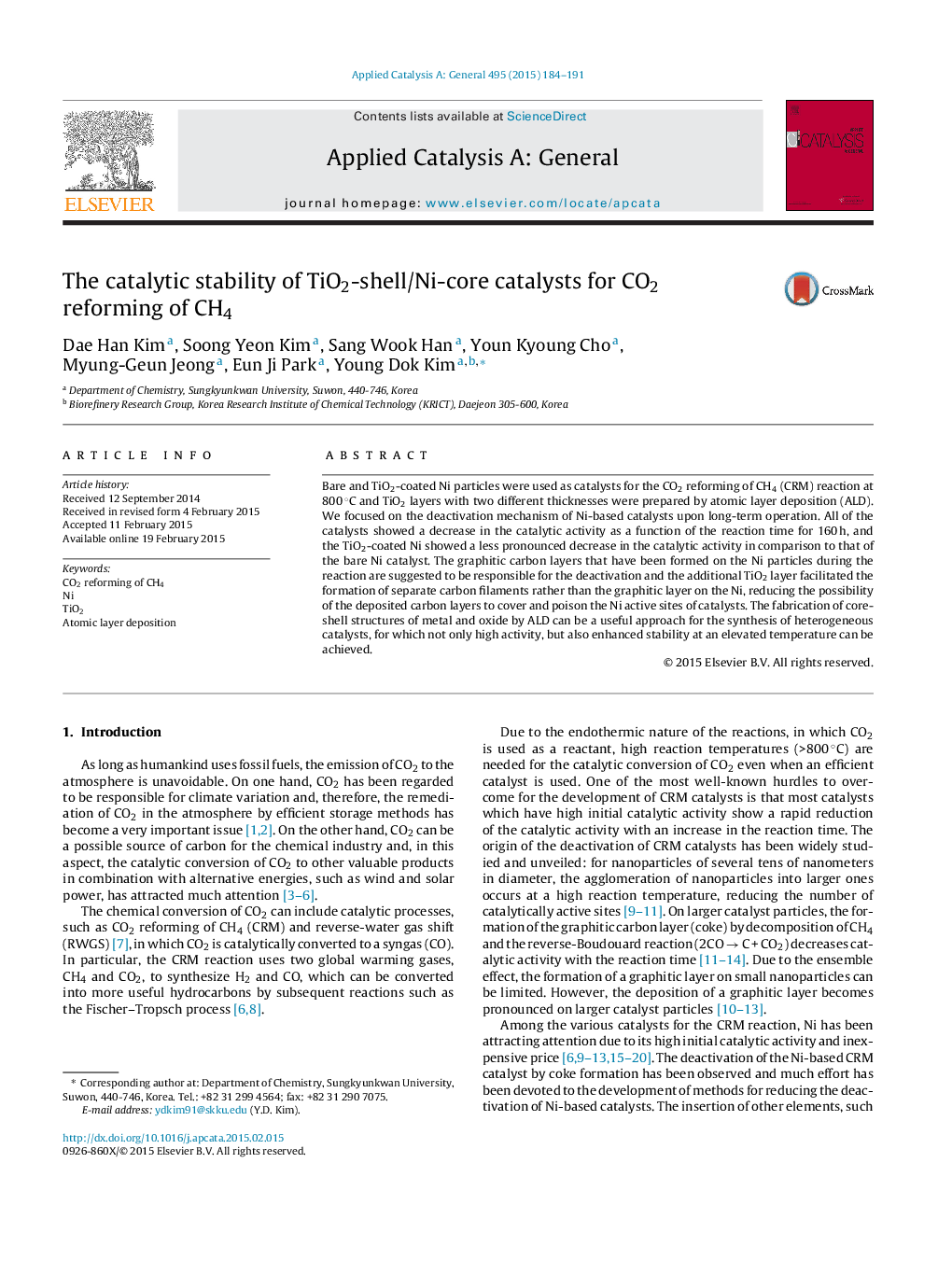| Article ID | Journal | Published Year | Pages | File Type |
|---|---|---|---|---|
| 39314 | Applied Catalysis A: General | 2015 | 8 Pages |
•TiO2-shell/Ni-core catalysts were fabricated by atomic layer deposition (ALD) method.•TiO2 layers on Ni enhanced the stability and selectivity for CRM at 800 °C.•TiO2-shell/Ni-core showed the formation of separated carbon filaments during CRM.•Formation of separate C filament left Ni-rich areas, resulting in long-term activity.•Homogeneous C layer on bare Ni showed a more pronounced decrease in CRM reactivity.
Bare and TiO2-coated Ni particles were used as catalysts for the CO2 reforming of CH4 (CRM) reaction at 800 °C and TiO2 layers with two different thicknesses were prepared by atomic layer deposition (ALD). We focused on the deactivation mechanism of Ni-based catalysts upon long-term operation. All of the catalysts showed a decrease in the catalytic activity as a function of the reaction time for 160 h, and the TiO2-coated Ni showed a less pronounced decrease in the catalytic activity in comparison to that of the bare Ni catalyst. The graphitic carbon layers that have been formed on the Ni particles during the reaction are suggested to be responsible for the deactivation and the additional TiO2 layer facilitated the formation of separate carbon filaments rather than the graphitic layer on the Ni, reducing the possibility of the deposited carbon layers to cover and poison the Ni active sites of catalysts. The fabrication of core-shell structures of metal and oxide by ALD can be a useful approach for the synthesis of heterogeneous catalysts, for which not only high activity, but also enhanced stability at an elevated temperature can be achieved.
Graphical abstractFigure optionsDownload full-size imageDownload high-quality image (174 K)Download as PowerPoint slide
